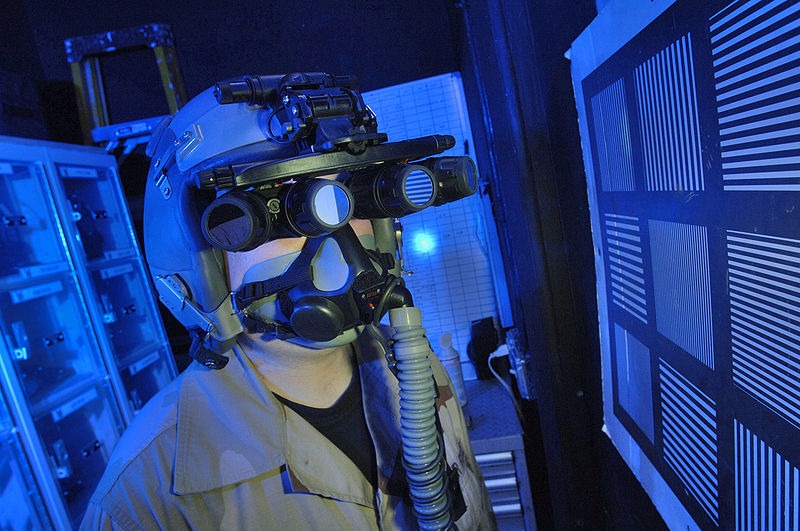Innovations in EMP-Resistant Technology

In our increasingly digital world, the need for EMP-resistant technology has never been more critical. Innovations like conductive concrete are revolutionizing the field by providing practical solutions to safeguard military installations, commercial buildings, and critical infrastructure. These advancements are not mere theoretical concepts; they are actively being implemented to enhance national security and everyday life. Specialized coatings and ongoing research initiatives are further enhancing protection capabilities. But what is driving these developments, and how do they function? Let's delve into what makes these solutions groundbreaking and essential in modern infrastructure.
Importance of EMP Shielding

Why is EMP shielding so crucial for safeguarding our electronic systems and national security? An electromagnetic pulse (EMP) can disrupt or destroy electronic devices, crippling communication networks, power grids, and other critical infrastructure. This makes EMP protection essential for maintaining the functionality and security of these systems. Incorporating EMP protection measures, such as Faraday Cages, effectively shields sensitive electronics from destructive pulses.
A Faraday Cage surrounds electronic equipment with a conductive material, preventing electromagnetic fields from penetrating and causing damage. This technology is vital for preserving the integrity of military installations, government buildings, and commercial structures.
The significance of EMP shielding extends beyond government and military applications. Everyday infrastructure, including hospitals, financial institutions, and communication networks, also relies heavily on electronic systems. Protecting these systems ensures that society can continue to function smoothly even in the event of an EMP attack.
Developing and implementing EMP shielding solutions represents a proactive approach to national security and electronic system preservation. By protecting our critical infrastructure, we contribute to overall resilience and stability in the face of potential EMP threats.
Conductive Concrete Development
Engineers at the University of Nebraska have revolutionized EMP protection by developing a conductive spray-on concrete composed of magnetite, carbon, and metal elements. This innovative material effectively absorbs and reflects harmful electromagnetic pulses, providing robust defense against EMP attacks. Unlike traditional Faraday cages, which are often expensive and cumbersome, this conductive concrete offers a cost-effective and adaptable alternative.
This patented conductive concrete, exclusively produced by ABC Group, has demonstrated its efficacy through rigorous testing. A test structure at a disaster recovery complex confirmed that the material meets and exceeds military shielding requirements for both EMP protection and explosion resistance.
This development is pivotal for safeguarding critical infrastructure, data centers, and sensitive electronic devices from EMP threats. Integrating conductive concrete into building structures ensures strong protection against potential EMP attacks. Its unique properties make it a practical and efficient solution for contemporary EMP shielding needs, representing a significant investment in a resilient future.
Applications of Shielding Concrete

Shielding concrete can protect critical infrastructure and retrofit existing buildings to meet military compliance standards. Its magnetite component effectively absorbs and reflects electromagnetic waves, providing robust EMP protection. Commercially available as EMSS-Electromagnetic Shielding Shotcrete, it's accessible for diverse applications.
Protecting Critical Infrastructure
One of the most effective ways to protect critical infrastructure from electromagnetic interference (EMI) is by using conductive cement. Developed by engineers in Nebraska, this advanced material functions similarly to a modern-day Faraday cage. It effectively absorbs and reflects electromagnetic waves, providing robust shielding for vital facilities. Whether it's power grids, communication hubs, or data centers, maintaining the operational integrity of these infrastructures during an electromagnetic pulse (EMP) attack is crucial.
Conductive cement meets and exceeds military standards for EMP protection, making it a highly reliable option for safeguarding critical assets. Its unique composition allows it to neutralize electromagnetic interference, thereby preventing disruptions that could incapacitate essential services. By integrating this shielding cement into your infrastructure, you significantly enhance its resilience against EMP threats.
Additionally, this conductive cement is commercially available as EMSS-Electromagnetic Shielding Shotcrete and is exclusively distributed by ABC Group. This ensures that you can readily access this advanced technology for new construction projects, ensuring your infrastructure is built to withstand electromagnetic threats from the ground up. Don't leave your critical infrastructure exposed; investing in conductive cement today provides a proactive solution to future electromagnetic challenges.
Retrofitting Existing Buildings
When retrofitting existing buildings, incorporating conductive concrete offers a practical and effective way to protect sensitive electronics from electromagnetic interference (EMI). Developed by engineers in Nebraska, this specialized concrete, known as Electromagnetic Shielding Shotcrete (EMSS), surpasses even the stringent requirements set by the military, making it an excellent choice for a wide range of applications.
Using EMSS for retrofitting existing buildings isn't only cost-effective but also highly efficient. This advanced material provides superior protection by creating a barrier that electromagnetic interference can't penetrate. Its versatility allows it to be applied in diverse settings, making it suitable for commercial, industrial, and residential projects.
The ABC Group holds the exclusive rights for the production of this shielding shotcrete, ensuring that the product meets or exceeds military standards. Whether you're dealing with a data center, a hospital, or a high-security government facility, applying this shielding concrete can safeguard essential electronic systems from disruptive electromagnetic fields.
Military Compliance Standards
Meeting military compliance standards, the EMSS (Electromagnetic Shielding System) concrete safeguards critical infrastructure against EMP threats. Developed by engineers in Nebraska, this advanced material not only meets but exceeds stringent military requirements for EMP protection. It's specifically designed to shield crucial electronic equipment from interference, ensuring operational readiness in the face of potential threats.
The concrete's key ingredient, magnetite, imbues it with magnetic properties that significantly enhance its shielding effectiveness. Here's why EMSS is a transformative solution for military applications:
- Cost-effective and Flexible: EMSS is commercially available and can retrofit existing structures, providing a cost-effective solution for enhancing EMP protection without the need for new construction.
- Absorbs Electromagnetic Waves: The concrete efficiently absorbs electromagnetic waves, offering robust protection for sensitive electronic equipment housed within metal enclosures or other critical infrastructures.
- Proven Efficacy: A prototype structure in Lakeland, Florida, validates EMSS's capabilities, demonstrating its effectiveness in meeting and surpassing military compliance standards.
With EMSS, essential infrastructure and electronic equipment are fortified against EMP threats, ensuring security and operational integrity.
GeoPlasma Research Initiatives
GeoPlasma Research is at the forefront of developing advanced coatings designed to protect space vehicles and satellites from electromagnetic pulse (EMP) attacks and space radiation. Their innovative approach focuses on shielding against nuclear-generated EMPs and space radiation, optimizing the coatings' properties to enhance bond strength, durability, and maintain a lightweight and cost-effective profile.
These high-performance coatings offer practical advantages beyond theoretical applications. For instance, NASA's satellites and space vehicles can now benefit from enhanced protection against the destructive impacts of EMP attacks and space radiation. Additionally, this technology extends to missile defense systems, providing a cost-effective shield for critical infrastructure and electronic systems vulnerable to EMP effects.
GeoPlasma's research methodologies are particularly advanced. They employ AI-based deep generative design, along with simulation, fabrication, and rigorous testing, to validate the effectiveness and durability of their coatings. These sophisticated techniques ensure that the coatings can withstand harsh conditions, making them invaluable for both commercial and military applications.
Future Research Directions

Future research will build on GeoPlasma's advancements by expanding EMP-resistant technology to protect a broader range of electronic devices and infrastructure. Efforts will focus on exploring applications beyond traditional shielding methods, incorporating innovative solutions to enhance protection against electromagnetic pulses.
To achieve these goals, researchers will:
- Investigate Advanced Materials and Coatings: Scientists will explore cutting-edge materials and novel coatings to enhance the EMP resistance of various electronic devices and critical infrastructure.
- Develop Cost-Effective Solutions: Emphasis will be placed on creating efficient, budget-friendly options that can be widely adopted to safeguard systems from electromagnetic pulses without imposing excessive costs.
- Collaborate with Experts: Partnerships with leading specialists will deepen the understanding of EMP effects and lead to more effective mitigation strategies. This collaborative approach will continually refine and improve EMP-resistant technology, adapting to evolving threats and technological advances.
Commercialization and Licensing
Consider how exclusive licensing agreements can facilitate market expansion. Such agreements, like the one between the University of Nebraska-Lincoln and ABC Group, enable the development of commercial products that meet stringent standards. This, in turn, opens new markets and fosters ongoing innovation and application exploration.
Exclusive Licensing Agreements
Exclusive licensing agreements, such as the one between the University of Nebraska-Lincoln and ABC Group, are essential for bringing innovative technologies to market. This agreement grants ABC Group the exclusive rights to market the shielding shotcrete product developed by Nebraska engineers. This advanced material, known for its EMP-resistant properties, has already demonstrated its effectiveness in a prototype structure in Lakeland, Florida, surpassing military shielding requirements.
With these exclusive rights, ABC Group can concentrate on producing and marketing this advanced shielding shotcrete, ensuring it reaches industries requiring superior EMP protection. The agreement also includes the commercialization of conductive concrete, another groundbreaking product designed to mitigate electromagnetic pulse effects.
The benefits of this exclusive licensing agreement are significant:
- Market Leadership: ABC Group can establish itself as a leader in EMP-resistant materials, gaining a competitive advantage.
- Innovation Continuity: Nebraska engineers can continue to explore new applications for conductive concrete, driving ongoing advancements.
- Quality Assurance: Exclusive rights enable ABC Group to maintain high standards and consistent quality in the production and marketing of shielding shotcrete.
Through strategic partnerships like this, groundbreaking technologies can transition from the lab to real-world applications, providing robust solutions for EMP protection.
Market Expansion Strategies
To effectively implement market expansion strategies, companies can leverage exclusive licensing agreements for the commercialization of EMP-resistant technologies. By entering strategic licensing partnerships, such as those with ABC Group, you can facilitate the production and distribution of shielding concrete products. These agreements enhance the availability of EMP-resistant technology across various industries, particularly those vulnerable to electromagnetic pulses.
Your commercialization efforts should focus on broadening the reach of EMP-resistant solutions by identifying and partnering with key industry players. Licensing agreements not only ensure the widespread adoption of your shielding solutions but also enable efficient scaling of production. Through these partnerships, you can optimize market impact, making the technology accessible to a broader audience.
The objective is to license the technology to partners who can integrate EMP-resistant solutions into their existing product lines and infrastructure. This approach ensures that EMP shielding becomes a standard feature across multiple applications, from critical infrastructure to consumer electronics, thereby significantly improving the resilience of systems vulnerable to electromagnetic pulses.
Commercial Product Development
Building on the successful prototype in Lakeland, Florida, companies can now focus on commercializing and licensing the state-of-the-art EMP-resistant shielding shotcrete. ABC Group holds exclusive rights to market this advanced product, developed by University of Nebraska-Lincoln engineers Christopher Tuan and Lim. The shielding shotcrete, known as EMSS (Electromagnetic Shielding Shotcrete), exceeds military shielding requirements and is now commercially available.
To capitalize on this breakthrough, businesses should consider the following steps:
- Product Integration: Incorporate EMSS into disaster recovery complexes to safeguard critical infrastructure and electronic systems from EMP and explosive threats.
- Licensing Agreements: Establish licensing deals to broaden the market reach of EMSS, allowing more industries to leverage its protective properties.
- Construction Methods: Employ advanced construction techniques with EMSS to construct blast-resistant structures that offer enhanced safety and durability.
Conclusion
Innovations in EMP-resistant technology, such as conductive concrete and specialized coatings, are revolutionizing the protection of essential systems. These advancements aren't just theoretical—they are already in use to safeguard military, governmental, and commercial infrastructures. With ongoing research and growing commercialization, the future is promising for enhanced EMP shielding. These technologies are expected to play a crucial role in preserving national security and protecting everyday electronic systems from electromagnetic threats.




